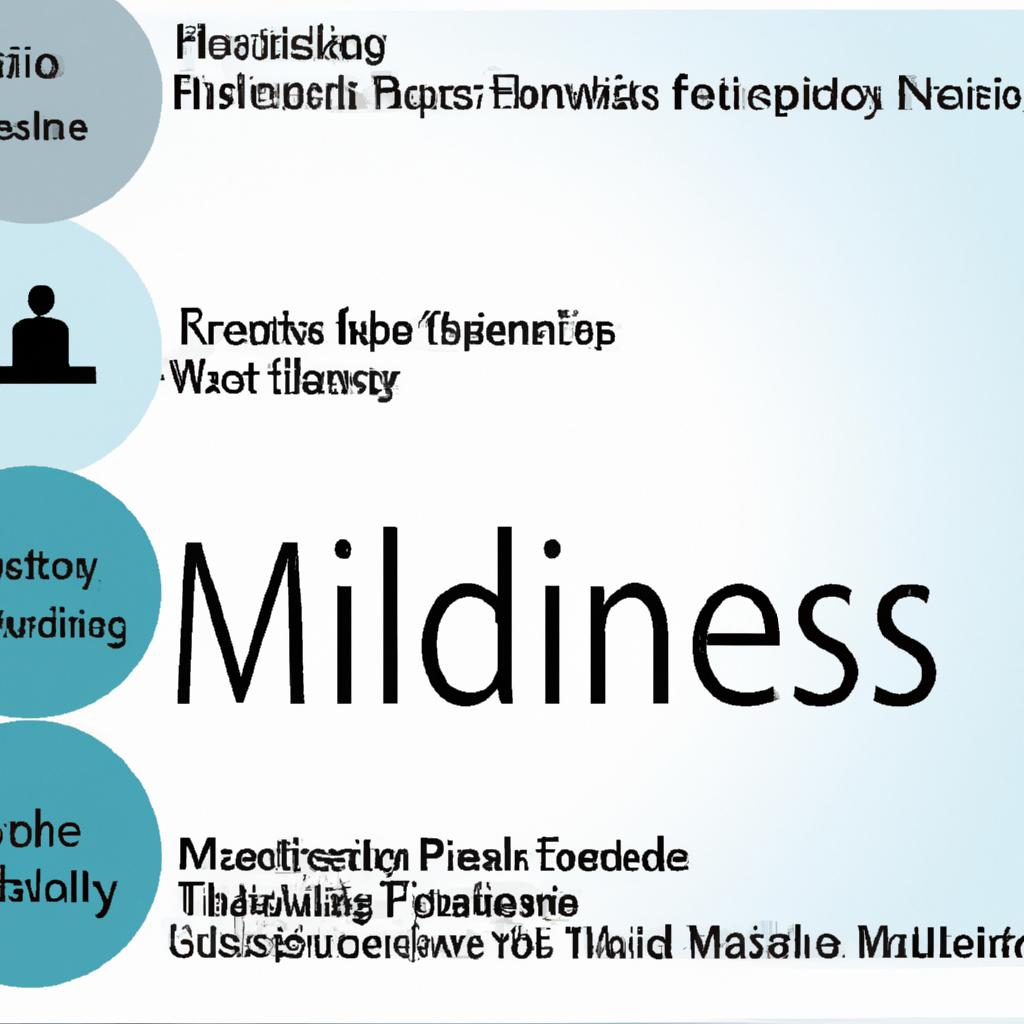Unlocking Wellness: How a Healthy Lifestyle Minimizes Chronic Disease Risk

In a world where the pace of life often overshadows our well-being, the quest for a healthier lifestyle has become more crucial than ever. As chronic diseases such as diabetes, heart disease, and obesity continue to cast a looming shadow over public health, understanding how to effectively minimize these risks is paramount. “Unlocking Wellness” delves into the profound connection between our daily choices and long-term health outcomes. Through mindful eating, physical activity, and holistic practices, we can cultivate a lifestyle that not only enhances our quality of life but also shields us from the clutches of chronic illness. In this exploration, we will unravel the science behind wellness, offering insights and practical strategies to empower individuals on their journey toward a healthier, more vibrant existence. Join us as we navigate the intricate pathways to wellness and discover how simple changes can unlock a healthier future.
Exploring the Connection Between Lifestyle Choices and Chronic Disease Prevention
The intricate relationship between daily habits and chronic diseases is increasingly gaining recognition in the healthcare community. Choices made around diet, physical activity, and overall wellness can serve as powerful preventatives against conditions such as heart disease, diabetes, and certain cancers. When individuals prioritize **nutritional** balance, engage in **regular** physical activity, and cultivate **mental** well-being, they essentially fortify their bodies, boosting resilience against chronic illnesses. Here are some key lifestyle factors that contribute to health maintenance:
- Balanced Nutrition: Emphasizing whole foods, fiber-rich vegetables, and lean proteins over processed options.
- Regular Exercise: Engaging in at least 150 minutes of moderate aerobic activity weekly can significantly decrease disease risk.
- Stress Management: Incorporating yoga or meditation routines to improve emotional health and reduce chronic inflammation.
Moreover, the impacts of lifestyle on chronic disease can be succinctly summarized through a comparison of risk factors associated with different habits. The following table highlights how various lifestyle choices can either elevate or diminish risk levels for prevalent chronic diseases:
| Lifestyle Factor | Risk Level for Chronic Disease |
|---|---|
| High Sugar Intake | Increased Risk |
| Regular Physical Activity | Decreased Risk |
| Smoking | Significantly Increased Risk |
| Mindful Eating | Decreased Risk |
Incorporating these elements into daily routines encourages a shift towards a more holistic approach to health. Each conscious choice contributes to a foundation of wellness that not only enhances individual quality of life but also promotes longevity and vigor in the face of potential health challenges. Embracing a proactive stance on health can ultimately pave the way for a future characterized by vitality and resilience against chronic diseases.

The Power of Nutrition and Physical Activity in Promoting Wellness
The connection between what we eat and how active we are plays a crucial role in our overall health and longevity. A balanced diet rich in **whole foods** provides essential nutrients that fuel our bodies, supporting every function from cellular repair to immune defense. When selecting food, consider incorporating a variety of:
- Fruits and Vegetables: Packed with vitamins, minerals, and antioxidants.
- Whole Grains: Excellent sources of complex carbohydrates and fiber.
- Lean Proteins: Vital for muscle growth and repair, including fish, poultry, and legumes.
- Healthy Fats: Found in avocados, nuts, and olive oil, which aid in nutrient absorption.
Physical activity complements nutritious eating by enhancing cardiovascular health, boosting mental wellness, and maintaining a healthy weight. Regular exercise, whether it’s **walking, cycling, or strength training**, releases endorphins, known as the body’s natural mood lifters. Consistency in your fitness regimen can be further supported by establishing goals and tracking progress. Here’s a simple breakdown of activity recommendations:
| Activity Type | Recommended Duration |
|---|---|
| Aerobic Exercise | 150 minutes per week |
| Strength Training | 2 days per week |
| Flexibility & Balance | 2-3 days per week |

Mindfulness and Its Role in Reducing Stress-Related Health Risks
In our fast-paced world, the importance of being present cannot be overstated. Embracing mindfulness practices such as meditation, breathing exercises, and yoga has been shown to significantly decrease stress levels. When individuals incorporate these techniques into their daily routines, they often experience a range of **physical and emotional benefits**. Not only do these practices promote relaxation, but they also enhance self-awareness, allowing individuals to recognize their stress triggers and respond to them more effectively. By focusing on the present moment, individuals cultivate a sense of inner peace that can shield them from the relentless pressures of everyday life.
Research has revealed that regular mindfulness activity can lead to measurable improvements in health. For example, studies indicate a reduction in ailments linked to chronic stress, such as **high blood pressure, anxiety, and heart disease**. The following list outlines some key ways in which mindfulness contributes to overall well-being and minimizes health risks:
- Improved Mood: Heightened awareness helps regulate emotions.
- Better Sleep: Mindfulness aids in reducing insomnia and promotes restorative sleep.
- Enhanced Focus: Practicing presence can sharpen attention and cognitive functioning.
- Healthier Relationships: Increased empathy and compassion can improve interpersonal connections.
Future Outlook
As we journey through the intricate landscape of our health, the path towards wellness often unfolds through the simple yet powerful choices we make each day. By embracing a healthy lifestyle, we hold the key to not only enhancing our quality of life but also significantly reducing the risk of chronic diseases that haunt many in our modern world. The intertwining threads of balanced nutrition, regular physical activity, and mental well-being create a tapestry of resilience, offering us protection as we navigate the complexities of our lives.
In this pursuit, it’s essential to remember that “wellness” is not merely a destination but a continuous journey—a dynamic interplay between our habits, environment, and mindset. Each step taken towards a healthier lifestyle is a step away from the shadows of chronic illness. So, let us cultivate our gardens of health with care, knowledge, and intention, allowing the seeds of wellness to flourish in our lives.
unlocking wellness is not just about minimizing risks; it’s about maximizing our potential to thrive. The choices we make today lay the groundwork for a healthier tomorrow, inspiring others to join in our quest for a vibrant, fulfilling life. Together, let’s illuminate the path toward lasting health, transforming both our individual experiences and the collective narrative of well-being.





